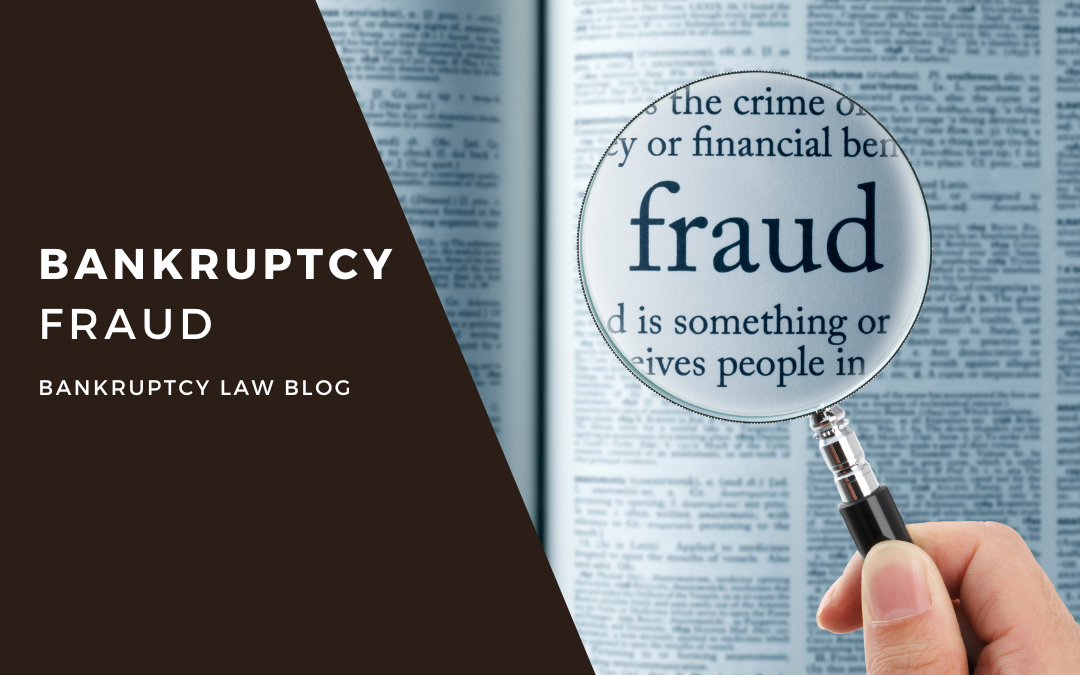The Federal Bureau of Investigation (FBI) estimates that 10 percent of all bankruptcy filings involve fraud. According to UScourts.gov 413,616 bankruptcies were filed in the U.S. in 2021. That means that over 40,000 cases were fraudulent.
In discussing bankruptcy fraud, most people assume it means a person or company who has inappropriately filed for one of the six types of bankruptcy in order to avoid paying debts. That is true, however, bankruptcy fraud can be complex and involve multiple parties. According to Britanica.com there are four primary types of bankruptcy: concealment of assets, petition mills, multiple-filing schemes, and bust-out schemes.
Bankruptcy Fraud – Concealment of Assets
The Cornell School of Law states that approximately 70% of all bankruptcy fraud is based on the concealment of assets. This refers to an individual, business, and/or third party who knowingly omits critical information or falsifies documents to hide assets that show the filer can pay their debts. In some cases, it may also involve creating false debt or obligations that make the filer seem insolvent (debt exceeds assets).
In August 2022, the Department of Justice published the case of an attorney who pleaded guilty to bankruptcy fraud and accepted the penalty of disbarment after he falsified documents to hide over $1M of his client’s assets.
Bankruptcy Fraud – Petition Mills
Petition Mills propagate a particularly insidious form of bankruptcy fraud as often the filer has no idea that they are caught up in a scheme. Representatives from mills proactive contact individuals in financial distress and/or advertise themselves as consumer advocates.
Typically, they attract individuals attempting to safeguard their housing situation, often renters seeking landlord protection. Instead of contacting landlords, mill operators file bankruptcy on behalf of the client, dragging out the process and charging high fees along the way. Victims often end up in a worse financial status, with no savings, credit impacted by bankruptcy, and the same or worse housing conflict.
Bankruptcy Fraud – Multiple Filings
At times, individuals intentionally “work the system” by filing for bankruptcy in more than one state. They may use their real identity or stolen identities. Often they intentionally limit the assets they disclose to get debt dismissed while avoiding any liquidation of their hidden assets. In addition, they may qualify for a full discharge of debt instead of a repayment plan, because the small assets make them appear insolvent (more debt than assets).
Bankruptcy Fraud – Bust Out Schemes
The courts and FBI have been more proactive in identifying and prosecuting this type of fraud. Bust Out Schemes refer to individuals who apply for one or more lines of credit and then maxes them out with no intention of repaying the best. The lines of credit may include credit cards, store cards, home equity lines of credit, and other forms of revolving credit.
Some offenders rack up debt quickly within 3 to 4 months and seek bankruptcy relief soon after. Others intentionally begin with good credit habits. They make reasonable charges and make timely and consistent payments. Over a period of one to two years, they often qualify for credit increases and continue opening different credit accounts based on their favorable credit history. Once they have accrued a high dollar amount of available credit, they increase their purchases, maxing out every available credit line. The debt is often so significant that it is impossible for them to repay and they file for bankruptcy.
This type of fraud can be difficult to provide, and only recently has prosecution of these cases become more common. Credit card companies have devised software that can detect Bust Out Scheme spending patterns, making it easier to minimize exposure, conduct investigations, and collaborate with law enforcement.

